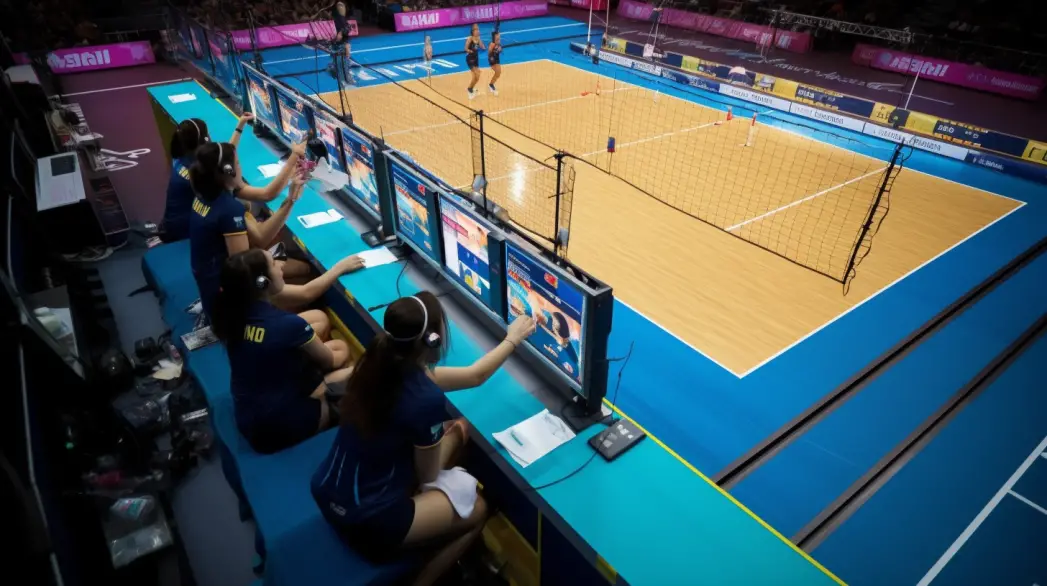
Volleyball is an electrifying and fast-paced sport that calls for exact scorekeeping to capture the game’s progress accurately. The evolution of live scoring in volleyball has been impressive, giving fans access to real-time reporting, detailed player statistics, and interactive features that enhance fan engagement. As technology improved, so did the various ways of tracking live volleyball scores, transitioning from manual scoreboards to modern mobile apps.
The introduction of mobile apps brought about a considerable transformation in the live scoring experience for volleyball, taking it up a notch. Mobile applications provide current tracking and reporting of live volleyball scores, permitting enthusiasts everywhere to keep up with and interact with the game regardless of location or time.
Some mobile apps offer live streaming of matches, comprehensive player data, and interactive features such as live chat and social media integration. This has made volleyball more accessible and enjoyable for fans, particularly those who cannot attend the game personally. Traditional scoreboards have been rendered redundant since cutting-edge present-day live scoring surpasses them — with mobile applications emerging as the most popular choice for this task. Let us explore how far live scoring in volleyball has come over time.
Scoreboards
The primary form of live scoring in the early days of volleyball was the manual scoreboard, where an individual would use small wooden numbers to display the score, rotating or flipping them on hooks present on the scoreboard. Although effective, this method needed to be faster, prone to inaccuracy, and subject to human error. Additionally, scorekeepers had to replace the wooden numbers every time the score changed, causing delays and errors that sometimes resulted in overtime.
Digital Scoreboards
Digital scoreboards were a noteworthy improvement over traditional manual scoreboards. They allowed for faster and more accurate scorekeeping that was displayed on electronic screens, indicated scores, the set count, and sometimes, even the time remaining in the match. The scorekeepers could effortlessly manage the displays using either buttons or remote controls, making it simpler to keep track of the score, minimize errors and delays, and expedite the game.
Mobile Apps
Mobile apps present a host of advantages, from real-time reporting and analysis of scores to interactive components such as live chats and social media integration, as well as comprehensive data of the players. Therefore, these modern applications have made the sport more accessible and engaging for fans, allowing them to enjoy the sport more conveniently. As a result, the evolution of live scoring in volleyball has made the sport more receptive and exciting for fans globally.
With the surge of smartphones, live scoring seamlessly transitioned to mobile apps. These apps provide real-time scoring reports and analysis, enabling volleyball fans worldwide to follow the game from anywhere, anytime. Certain mobile apps even offer features such as live streaming, in-depth player statistical analysis, and interactive components such as live chat and social media integration. This makes the game more interactive and accessible to fans, especially those who are unable to attend the game physically.
Advantages of Mobile Apps:
- Real-time reporting of scores
- Fans can follow the game from anywhere, at any time.
- Provides detailed player statistics
- Offers interactive features such as live chat and social media integration
- Enhances fan engagement and accessibility to the sport.
In conclusion, the way volleyball scores are tracked has witnessed a drastic transformation from manual scoreboards to digital scoreboards and, currently, to mobile apps. The emergence of mobile apps offers several benefits, such as real-time scoring reports, comprehensive athlete statistics, and interactive components. Consequently, volleyball fans worldwide can now remain closely connected to the game and positively engage with it more conveniently.

